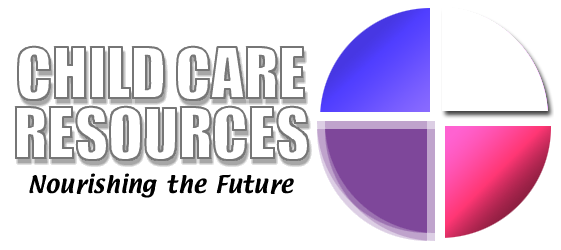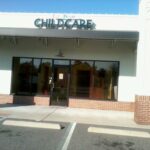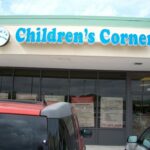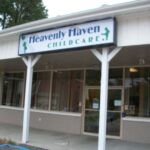Jonie's Story




Once apon a time Jonie joined the USDA Child and Adult Care Food Program to bring in extra funding to her child care center.
And every day she took care of the children. She taught them, she fed them, and she cleaned up after them. Jonie had one of the best child care centers in town.
Until one day, Jonie was audited by the State. They asked for her Meal Count Sheets, Production Records, Receipts, and USDA Income Eligibility Forms for each child.
And because of some mistakes, she had to pay the state back tens of thousands of dollars. And because of this she almost had to close her business, and the children she cared for almost lost their home away from home.
That’s when Jonie called Child Care Resources. They trained her. They helped her put systems in place to ensure her success. And they kept her records neat, complete and organized. When her documents were about to expire, Child Care Resources sent her new ones.
And ever since then, Jonie has been able to concentrate on what’s really important—taking care of her business. Jonie has the piece of mind knowing that Child Care Resources is there to help navigate the government paperwork.
The next year, Child Care Resources handled her State audit. There were no findings. Jonie is able to count on the USDA Food Program as a source of income that will be there for the next generation of children in her center.
“Child Care Resources is the preferred way to receive federal funding.”
This is how it works...
Any non-profit child care or non-residential adult care center can participate in the USDA Child & Adult Care Food Program (CACFP), and any for for-profit center can participate as long as 25% of the children or adults served come from lower income families.
What do you get? The quick answer: funding for the meals you serve.
The USDA will reimburse a center for a portion of its food costs as long as the center serves meals that meet federal standards. So participating in the CACFP is an easy way to bring in more money without increasing the fees you charge.
These payments, typically referred to as meal reimbursements, are made based on a formula for the number of children or adults you feed at a given meal multiplied by the rate of reimbursement for that meal. The rate of reimbursement varies based on several factors, including the type of meal served and income levels of the children. Specifically, there are three different levels of meal reimbursement defined by the USDA: Breakfast, Lunch/Dinner, and Snack.
For example, the highest level of reimbursement for lunch & dinner is $4.54 per child (or adult) served (for the 2023-2024 school year, which runs July - June). So if you serve 60 children at a lunch, you can receive $272.70 for that lunch!
However, the rates vary based on the income levels of the children or adult participants. The USDA has defined three different income levels:
- Free - The highest level of reimbursement, this is given to children or adult participants whose household income is less $36,075K per year for a family of four (and to families who categorically qualify*).
- Reduced - The middle level of reimbursement, this is given to children whose household income is less than $55,500K per year for a family of four.
- Paid - The lowest level of reimbursement, this is given for all other children.
So each time you enroll a child (or adult participant), you'll need the child's parents to fill out an Income Eligibility Form to classify the children into the Free, Reduced, or Paid categories. In for-profit centers, at least 25% of the children must be classified as either Free or Reduced (so even if the rest of the parents choose not to fill out the income information, you'll still be able to participate and get reimbursement for all children). In non-profit centers, none of the children need to qualify as free or reduced; however, the more that qualify, the higher the funding level. When you sign up with Child Care Resources, you'll get a lot of training on exactly how to handle these income eligibility applications and let us worry about the classification details.
*SNAP, TANF, Foster care.
For specific income eligibility guidelines, click here.
Average Monthly Check
The amount the center gets paid each month will vary depending on the number of meals and snacks you serve, and depending upon the mix of incomes of the children you serve. Child care centers offering drop-in care and serving 6 meals & snacks a day to 200+ children who come and go throughout the day can obviously expect to receive a much bigger check each month than those serving to a smaller number of children for just one or two meals.
However, let's make a few assumptions and show you how much you would be paid. Assume:
You serve 60 children. 10 children are classified by income as Free, 20 children are classified by income as Reduced, and 30 children don't classify as either, so fall into the Paid category. Each is served a Breakfast, Lunch, and afternoon snack. You're open each weekday
In this scenario, you'd receive $4970.00 each month. Larger centers serving more low income children can see reimbursements as high as $10,000 per month. (If you are serving adults, the amount will be the same).
What do you have to do?
Participating in the Food Program is almost a no-brainer for child care centers and adult day care centers. After all, who doesn't want a few thousand extra dollars each month? But in order to get that money, you do have to do some work.
You can participate in the Food Program by signing an agreement directly with the State. This makes you an independent center. The nice thing about this arrangement is that you get to keep 100% of the reimbursement rates. But there are also some key responsibilities. You are legally responsible for following every CACFP rule -- no matter what -- so that means you must have someone on staff that knows all the CACFP rules, and is an expert at handling paperwork. The state agency will come out and audit your center once every three years (and sometimes more often), and if they find you've made mistakes, they may demand you repay a portion of the funds you've received from the Food Program over the years. This could amount to tens of thousands of dollars, and is unfortunately not as rare as it should be. And if the state agency views the mistake as serious, they can take steps to bar your center from receiving other federal funds.
Alternatively, you can participate in the CACFP by signing up with Child Care Resources. As a USDA Sponsoring Organization, we will assume your Food Program liability, so you don't have to worry about paying funds back, or about any other potential liability introduced by paperwork mistakes. Our unique Pre-Claim Review process, helps to ensure your federal claim is accurate and that you receive the maximum reimbursement you are entitled to. We keep all of your records electronically organized and archived. We also visit your center relatively frequently, both to help train your staff, and to make sure you're following the proper procedures. In exchange, we retain 15% of your center's reimbursement for administering the CACFP for you.
Regardless whether you sign up independently or participate with Child Care Resources, you must keep daily attendance records and counts of children served at individual meals, must get specific food program enrollments filled out for each child at your center, maintain cost documentation for the funds received, and must note on a daily basis what foods are being served and that it meets Federal nutritional guidelines. Child Care Resources makes this much easier by providing an easy software interface to ensure these records are kept properly, and submits that to the State via Child Care Resources electronically.
How do you get started?
First, you must decide whether you're going to participate independently or with a sponsor. If you do choose to go with a sponsor, Child Care Resources will train you on all the details of the Food Program, including all the details of what foods to serve at each meal, how to do your paperwork, and more. We will walk you through the application process and have fast-track approval. Once your center is up and running on the program, we are there to check your paperwork and help ensure your center receives the maximum amount of reimbursement that it is entitled to. You can start the application process with Child Care Resources on-line by clicking here.











